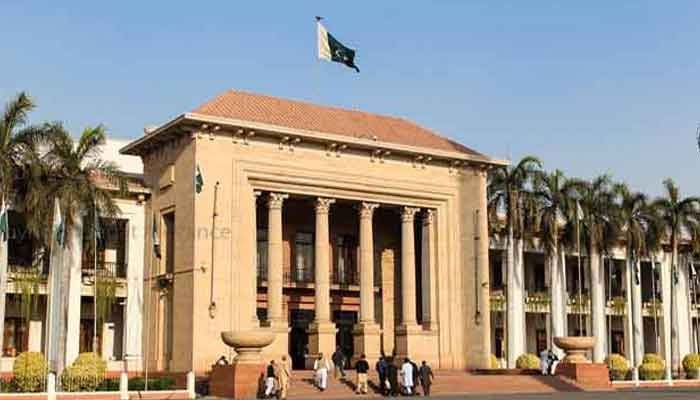An important battleground for the general elections in 2024 is Punjab. This province is home to 35 allocated seats for women and 141 general seats out of 266 National Assembly seats.
Punjab will therefore send 176 representatives to the National Assembly out of a House of 336. These seats are essential for forming Islamabad’s administration.
Voters determine the fate of political leaders and parties in a well-functioning, robust democracy; however, we are not fortunate enough to have such power over our own destiny. Thus, the next elections will be decided by the existing authorities along with a few powerful, capitalist, and feudal electables.
In Punjab, the party with the greatest number of electables is probably going to win the most seats. In about forty urban constituencies, political parties are crucial to the electoral process; in the other one hundred and one rural constituencies, they are not. The PML-N and PTI are anticipated to engage in a genuine fight in Punjab.
This time, a mix of these elements favors the PML-N. It has the “blessings” of the influential quarters first. It boasts the greatest number of electables as well as formidable contenders with resources, clout, votes, and the appropriate connections. Thus, the PML-N is in the lead in the Punjab election.
Prior to the events of May 9, the PTI led in the popular vote. Nevertheless, a lot of electables left the PTI after the incident.
Furthermore, although a close race between the PML-N and the PTI was formerly anticipated, the PTI’s persecution and the former prime minister Nawaz Sharif’s return from London in October have altered the landscape.
Most opinion polls showed that the PTI remained Punjab’s most popular political party even in the wake of the events of May 9. However, the reappearance of Nawaz Sharif has turned the tide and saved the PML-N from certain extinction.
In my piece “The Nawaz factor,” which appeared in these pages on October 24, 2023, I stated: “The Nawaz factor had been written off by a lot of political pundits and analysts. They believed that Nawaz Sharif was no longer a key player in the PML-N’s surge in popularity.
They believed that Nawaz might not be able to have a significant impact in the current situation since he was cut off from Pakistan’s ground realities.
However, Nawaz Sharif demonstrated once more that he remains the PML-N’s primary draw for supporters. The Lahore power display demonstrates their willingness to give Nawaz Sharif another shot in spite of their reservations. Under his direction, the PML-N has turned around politically.
The PML-N appears to have taken the upper hand in Punjab and is probably going to win a simple majority in the Punjab Assembly, emerge as the largest party in the elections, and become the province’s future administration.
.. It is evident from recent opinion polls that Punjab’s most popular party is the PML-N. The PML-N has a 45% popularity rating whereas the PTI has a 35% popularity rating, according to the IPOR study. After unseating Imran Khan, Nawaz Sharif is now the most well-liked leader in Punjab, according to a recent Gallup Pakistan poll.
For not holding proper intraparty elections, the Supreme Court decided to withhold the PTI’s election emblem, the “bat.” This ruling dealt a serious blow to PTI candidates, who are now running as independents using various symbols. In managing their campaigns across multiple constituencies, they are also encountering difficulties.
It appears that the PTI selected weak candidates over formidable PML-N challengers because to selection errors.In the past few years, a lot has changed. In the 2018 elections, the PTI saw the departure of almost 60% of its MNAs. They are running as independents or on PML-N tickets. The PTI still has excellent candidates who can win seats in several constituencies, but their numbers are limited.
The PTI’s poor, or better still nonexistent, party organization is its other election-related issue. The organizational structure of PTI was deficient even before to the events of May 9 and the ensuing suppression. The party’s structure is currently in ruins. Social media is the primary tool used by PTI candidates in their campaigns. However, to run polling places on election day, you need activists and polling agents.
Social networking is not the appropriate tool for this. Making the most of the circumstances, the PML-N is attempting to secure the most seats possible in Punjab.
According to my analysis, Punjab is expected to give the PML-N 90–95 seats in the National Assembly. The PML-N is predicted to win seven of the thirteen National Assembly seats in northern Punjab. While the PPP and the IPP are predicted to win one seat apiece, independents like Ch Nisar Ali Khan are likely to win four seats.
There are 80 National Assembly seats in central Punjab, and the PML-N is predicted to win about 60 of them. Fifteen seats are anticipated to go to independents.
Fifteen seats are anticipated to go to independents. The PPP is probably going to gain one seat from central Punjab, but the IPP, with assistance from the PML-N, is predicted to win four seats. Despite overwhelming odds, the PML-N even won a majority of seats in central Punjab in the 2018 elections. Similar to 2018, the PML-N is anticipated to win all or most of the districts of Sialkot, Narowal, Gujranwala, Lahore, Kasur, Sargodha, Toba Tek Singh, Okara, and Sahiwal.
The PML-N is expected to win about 27 of the 48 seats in south Punjab, including the bulk of seats from the districts of Khanewal, Multan, Vehari, Bahawalnagar, Bahawalpur, Rahim Yar Khan, Rajanpur, and DG Khan.
9–10 seats are anticipated to go to the PPP. Nine seats are expected to go to independents, with one seat going to each of the IPP and PML-Q.
It’s possible that the PML-N won’t be able to repeat its 2013 election success of 116 out of 148 seats. It took home 216 seats in the Assembly of Punjab. The party continued to rule central, south, and northern Punjab in 2013 after capturing the majority of the urban seats.
The PML-N is expected to secure a simple majority in the Punjab Assembly this time around and take office as the province’s administration.
.







